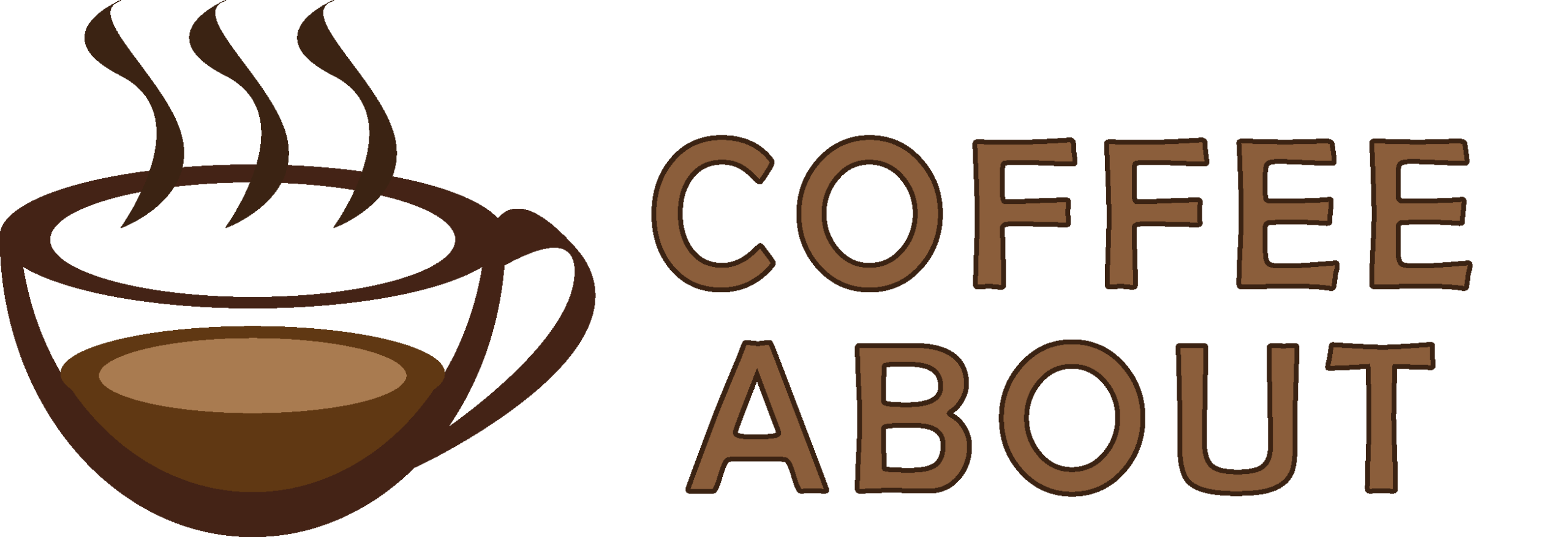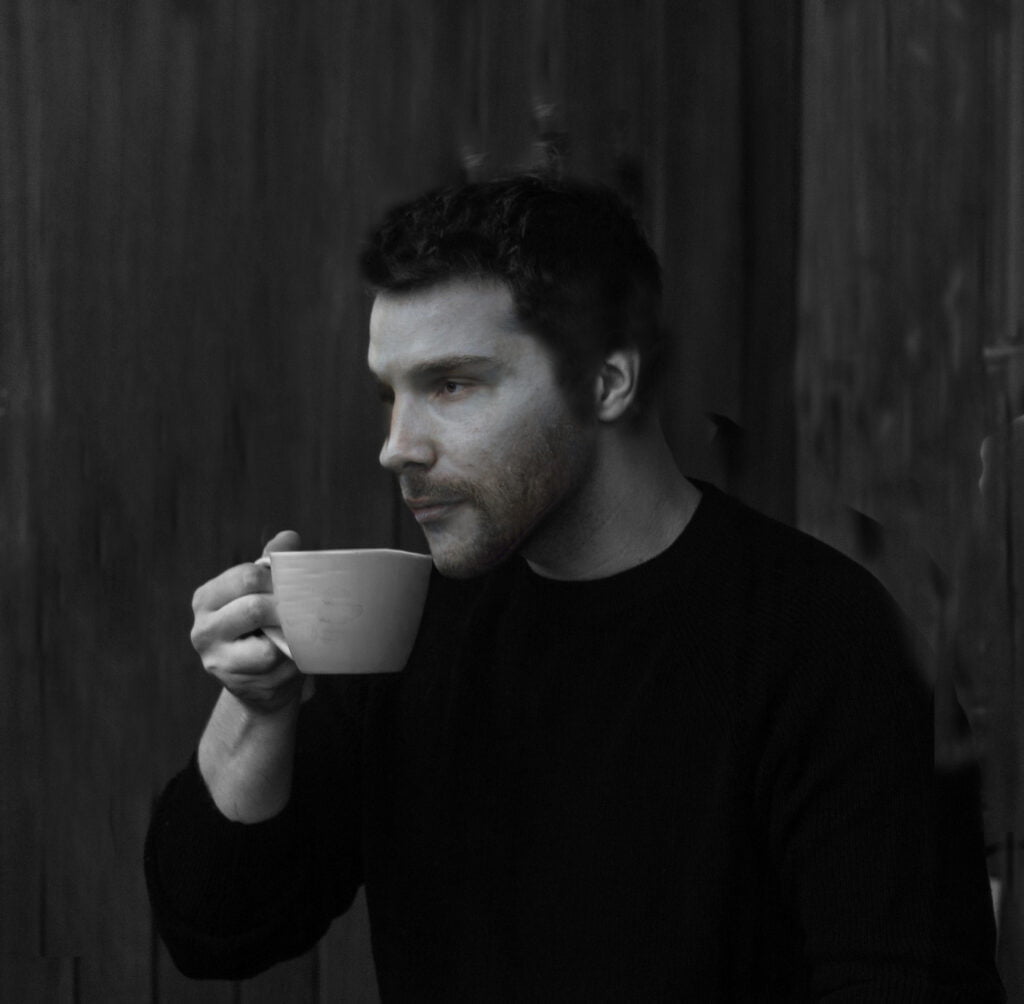Espresso machines are expensvie becasue they require sophisticated materials and robust construction to extract espresso at high pressure. The best machines use commercial-grade pumps, precision filters, and temperature control technology to create pressure and consistency.
You can get a basic espresso machine for $200-400, but you’ll likely need to spend over $1000 for a high-quality model.
On the other hand, you can easily get a good drip coffee machine for under 100 dollars.
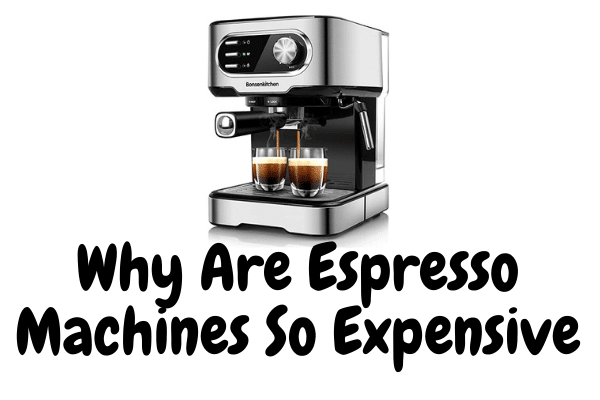
how much does an espresso machine cost?
At the lower end, you can find very basic espresso machines for $150-250. These are simple single-boiler semi-automatic Espresso machines and are not made of very durable material.
Mid-range home espresso machines cost $400-500. These machines have an electric pump for better pressure and often include a milk steamer wand. Features like temperature control and pre-programmed settings allow more precision when pulling shots. Build quality improves in this range.
High-end home espresso machines run $800-2000. They incorporate commercial-level components like brass portafilters and frothing wands with precision tips and often allow a fully automated brewing process. They also boast attractive stainless steel housing and advanced features like built-in grinders, dual boilers, and PID temperature control.
Finally, full-scale commercial-grade espresso machines start at $2000+ and can exceed $10,000. These machines offer unmatched durability and performance for high-end café settings. Multiple group heads allow fast production of espresso. They’re overbuilt, repairable, and facilitate fine-tuning of brewing parameters that are unmatched in home machines.
7 reasons why Espresso machines are so Expensive
1- Quality of material
Espresso machines are made with durable metals like brass and steel to handle the heat and high pressure during brewing.
Some companies may use industrial plastic or aluminum in body frames to cut off the price; However, cheaper plastic pieces just can’t compare over the long run. They degrade, crack, and affect the flavor.
Normal coffee machines don’t have to withstand higher pressure that’s why they are usually made of cheaper plastic material.
This is one of the main reasons for the huge difference in price between Normal coffee machines and Espresso machines.

2- Lower Demand
Espresso machines definitely aren’t as in demand as regular drip coffee makers. Many people don’t want to spend more than 100 dollars on a kitchen appliance.
I mean, something like 14% of American coffee drinkers use an espresso machine at home, while over 80% use a standard coffee maker.
Espresso machines have a very niche market of coffee shops, restaurants, and some enthusiastic coffee lovers.
To keep the company in profit and to cover the overhead production costs, espresso machine manufacturers have to keep the prices high to cover up the low sales.
Also, Low demand means there are not too many options available which leads to lower competition and higher prices.
3- Production Complexity
Making a high-quality espresso machine is way more complicated than churning out drip coffee makers. There are so many precision parts that have to fit together just right.
Between the pump, boiler, portafilter, and all the other components, the production process requires a lot of specialized skills and assembly.
Qualified Engineers and technicians are required to design and manufacture Espresso machines that drive the production cost higher.
On the other hand, Drip coffee makers are simpler, so even small startup companies can manufacture them easily in large numbers.
4- Research and Development
Creating safe, high-quality espresso machines requires a lot of research and testing.
Unlike simple coffee machines, an Espresso machine has to withstand higher temperatures and pressure.
To ensure that the material doesn’t fail while operating it has to go through various rounds of testing and that requires a lot of capital.
Modern espresso machine design involves 3D printing, energy-efficient tech, modeling and simulation, and IoT.
ASME
5- Extra features
Espresso machines usually have a lot of extra features than a normal Coffee machine. And these features naturally add to the cost.
I) Milk Frother
Almost all Espresso machines have a built-in milk frother to prepare milk-based Espresso drinks such as Lattes and Cappuccinos.
II) Coffee Grinder
While not all espresso machines come with an integrated grinder, it’s a common feature due to the importance of freshly ground beans for crafting an exceptional espresso shot.
III) Variety of settings
Espresso machines usually have a variety of drink options. With a simple one-touch operation, you can make drinks like single shots, double shots, cappuccinos, lattes, and more.
Some Espresso machines also have advanced features like digital display, wifi, and Bluetooth to program the brew setting.
IV) Temperature Control
Some espresso machines come equipped with a temperature adjustment controller, allowing users to fine-tune temperature with precision, and these PID controllers are very expensive.
6- Human Resource
Production Location and qualified labor are the factors involved in driving the cost of the Espresso machines higher.
Many electronic machine appliances are manufactured in low-wage countries like China. In contrast, high-end espresso machines are manufactured in the home country of Espresso i-e Italy where the cost of production is higher.
Also, all the espresso machine manufacturing centers have an engineering department where highly paid and qualified engineers ensure the safety of the machines and improve their design.
7- Brand Reputation
The brand name means a lot for expensive kitchen gadgets. And for espresso machines, established brands like Breville, Delonghi, Rancilio, and La Marzocco carry serious weight.
These companies have been around for decades, earned devoted followings, and have reputations for outstanding performance and quality. Espresso enthusiasts trust and respect them.
Naturally, that prestige allows top espresso machine brands to charge premium prices.
You’re not just paying for metal and plastic parts. You’re paying for the reputation and peace of mind that comes from a respected brand with a proven track record.
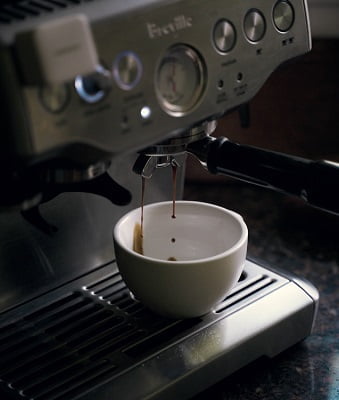
Read a complete review of Delonghi ECP 3420 and Capresso EC 100. They are economical and perfect Espresso machines for beginners.
What price is best for an Espresso machine?
If you want killer espresso and milk frothing at home, I think the $500-$1000 range is the sweet spot.
Anything under $300 is just too basic in my experience. You miss out on quality materials, pumps, and features that are really needed in a good quality espresso machine.
But you also don’t need to spend $2000+ for the absolute top-tier professional machines unless you’re a hardcore aficionado or opening a cafe!
In that mid-range $500-$1000 bracket, you can get a really high-quality automatic machine made by respected brands like Breville, Rancilio or Gaggia.
Different Types of Espresso Machines have different prices
Here’s a breakdown of how prices differ for various types of espresso machines
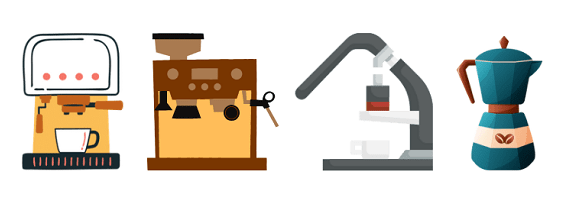
Semi-automatic Espresso machine
Semi-automatic espresso machines range from $300-$1,000. You have complete control over the brewing process in these models. Great for learning and customizing shots.
Single-boiler Semi-automatic Espresso machines are very affordable around $200-$300 while dual-boiler and Heat exchanger models cost over $500.
Super Automatic Espresso Machine
Fully automatic machines cost $500-$2,000. Just press a button and they do everything automatically with programmed settings. They are very convenient but are less flexible.
Pod-Based Espresso Machines
Pod-based espresso machines are $100-$300. They Use single-serve pods for easy clean-up and simplicity. Limited variety but very convenient choice for busy espresso lovers.
Portable Espresso machines
Portable and mini espresso machines run $50-$150. They are Compact and travel-friendly but the lower and inconsistent pressure doesn’t give the best tasting shot. Best for espresso on the go.
Check out the list of 10 Best portable Espresso maker reviews
Alternatives to Espresso coffee machines
For those seeking a more economical approach to espresso brewing, several alternatives offer a balance between cost and quality, allowing you to enjoy a respectable espresso without breaking the bank.
Pod Machines
Pod machines are simple and easy to operate. And you can get a fairly good shot of Espresso with these machines with the ease of pushing one button. Nespresso is the biggest player in manufacturing pod-based Espresso machines.
Pod machines may not provide the ultimate espresso experience, but they certainly cater to those seeking a hassle-free and affordable way to enjoy espresso shots.
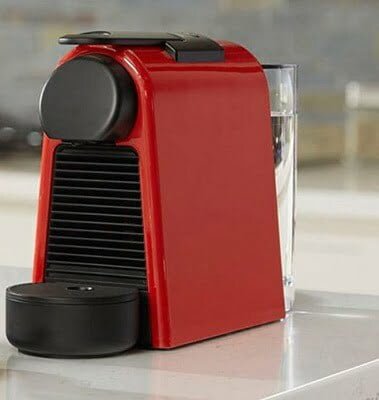
Check out a guide on Espresso vs Nespresso machines
Moka Pot
Moka Pot uses steam pressure to extract concentrated coffee that’s similar to espresso.
For around $20-$30, you can grab a moka pot and make espresso-like coffee at home with just some good coffee beans.
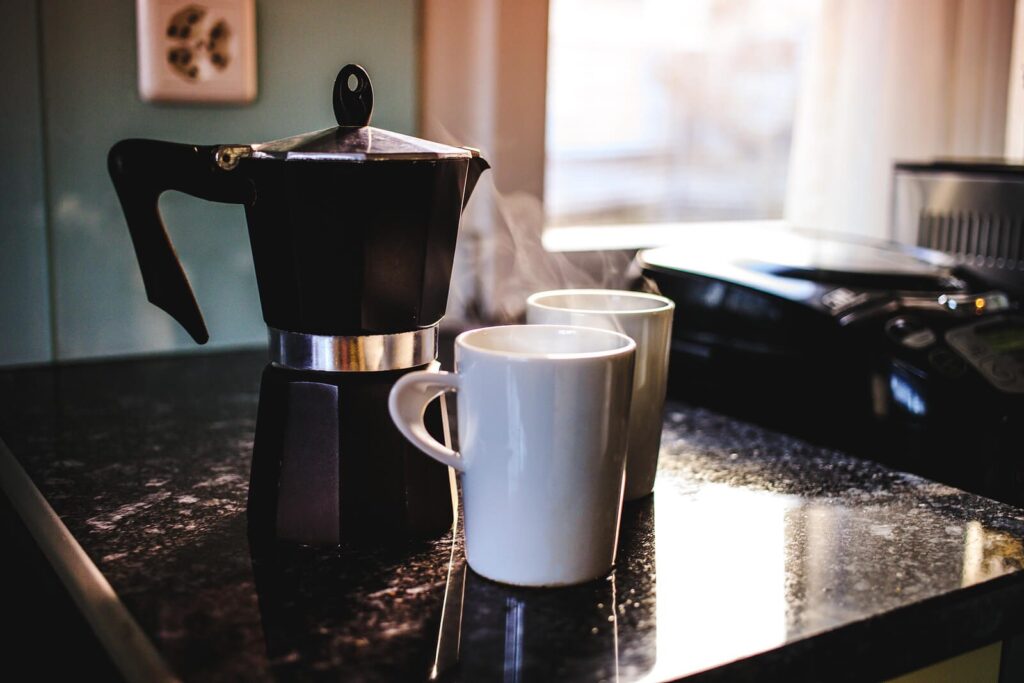
Check out a guide on Moka Coffee vs Espresso
Aero Press
The Aero press is another cheap option to make Espresso like coffee. It allows us to brew strong coffee similar to Espresso by manually pumping the pump.
It delivers a strong and concentrated drink using air pressure to push water through the grounds.
This machine is portable and perfect for traveling purposes. However, if you want a full taste of Espresso, the Aeropress is not a good option.
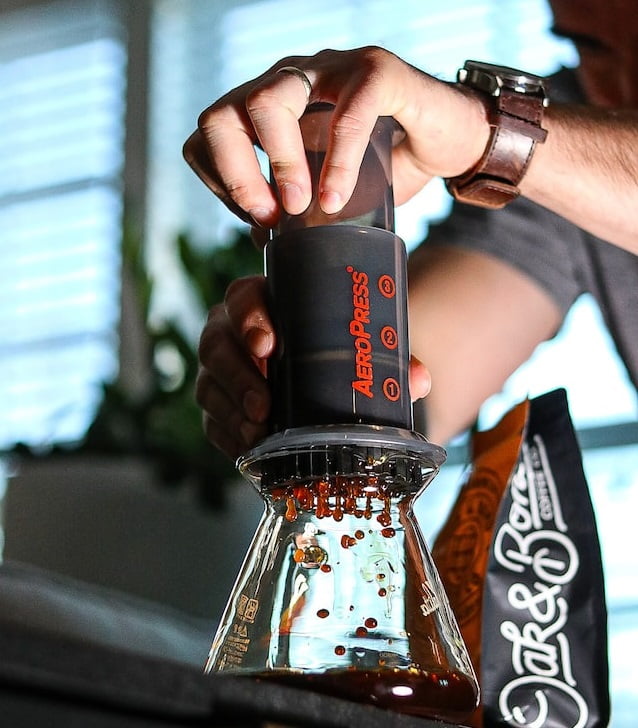
Final thoughts
And there you have it – the inside scoop on what makes espresso machines come with such lofty price tags!
I don’t know about you, but after learning about the technology, materials, and craftsmanship that go into these things, I have a new appreciation for my home setup.
Sure it cost me a pretty penny, but every creamy, smooth shot of espresso tells me it was worth it.
Let me know in the comments what kind of machine you use to brew your espresso at home. Are you riding high with a fancy model or keeping it simple with a budget-friendly option?
FAQs
What is so special about espresso machines?
Espresso machines use at least 9 bars of pressure to force hot water through finely ground coffee.
The pressure brings out the beans’ full taste and gives espresso its thick texture that you just can’t replicate otherwise. It’s all about the pressure!
Is it worth it to have an espresso machine at home?
Absolutely yes, If you’re a daily espresso drinker.
An Espresso shot or Latte or Cappuccino drink from a Cafe costs around 2-5 dollars while you can make these drinks at home under 1 dollar with a Home Espresso machine.
But if you’re an occasional espresso drinker, maybe just grab a Moka pot or Nespresso instead.
Related Espresso articles:
